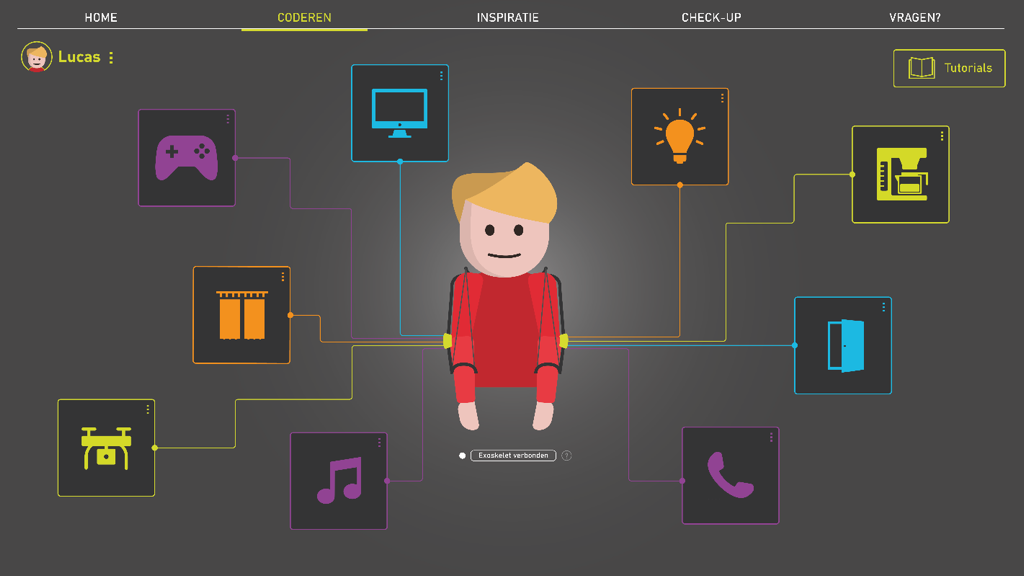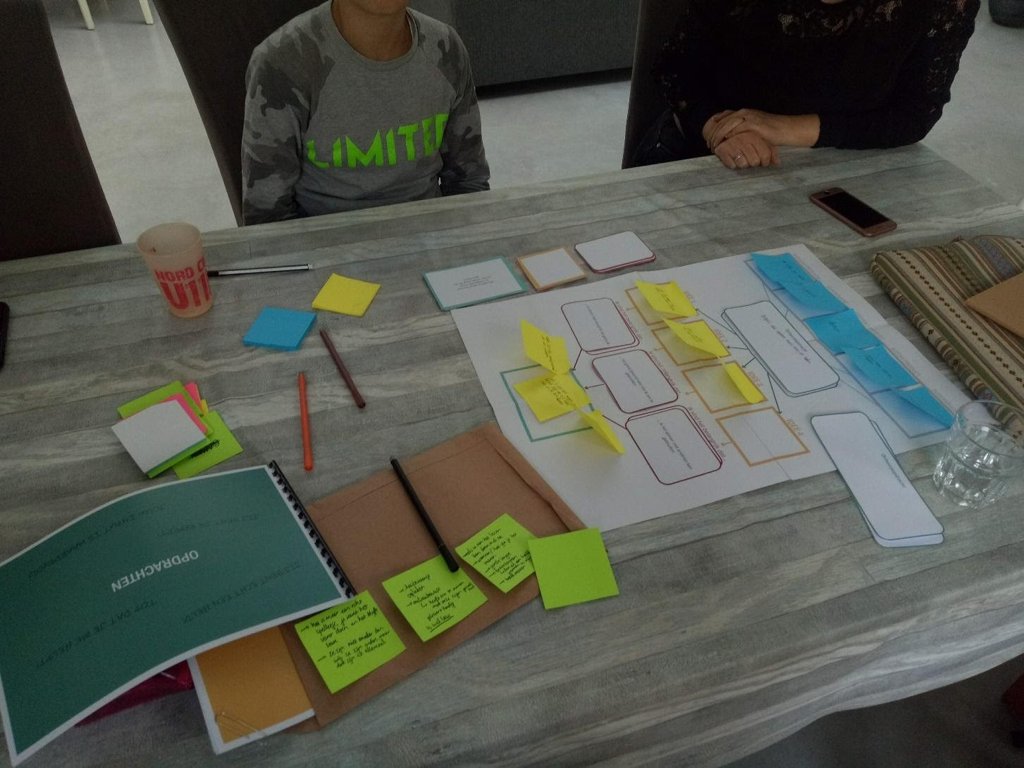Boys with Duchenne Muscular Dystrophy have a different life from most children. As they grow up, their muscles lose strength progressively. Around the age of 10, they become wheelchair-bound and in their teens, they lose most of their arm function. Therefore, an exoskeleton was developed to support the arm function of Duchenne boys between the ages of 10 and 17. As boys with Duchenne grow from children into adults, their wants and needs regarding (medical) products is expected to change. Therefore, the exoskeleton should be redesigned to mature with the user and change over the years.
To design a maturing exoskeleton, first the wants and needs regarding Duchenne boys between 10 and 17 were researched. Qualitative in depth-interviews and co-creation sessions led to three phases in Duchenne boys’ lives and constant and changing factors between those phases. The final design involved turning the exoskeleton into a controller, which can control products in Duchenne boys’ houses, such as lights and doors, by making movements.
The movements and linked products can be coded and recoded through an interface by the user himself, making the product dynamic and enabling it to change over the years.This design makes the exoskeleton more fun and relevant at a younger age, making it more likely to be accepted when it should be. By stimulating movement, physical functioning is preserved for as long as possible. And it gives boys with Duchenne more control and independence, which are important qualities for them at any age.
Eco-logica is about designing for, altering or shaping complex ever-changing environments. A boy with a rare disease maturing from child to adult in a medical, but also social environment, gives a very tangible example of what it means to design for complex situations. The project puts the user at the centre but takes every aspect into account; the medical system, technical possibilities, the social environment, user-product interaction.
Every decision made in a design process has many consequences, both positive and negative. Awareness of those consequences is incredibly important, as is the ability of designers to look beyond the boundaries of the sole design task they are working on.
This approach can lead to a more future proof design, as was the case with this project which not only takes into account the current struggles of acceptance of exoskeletons with younger generations, but also the wants and needs of older generations (with no product acceptance issues). By designing the transition between those phases, it’s possible to spark a more long-term interest.




